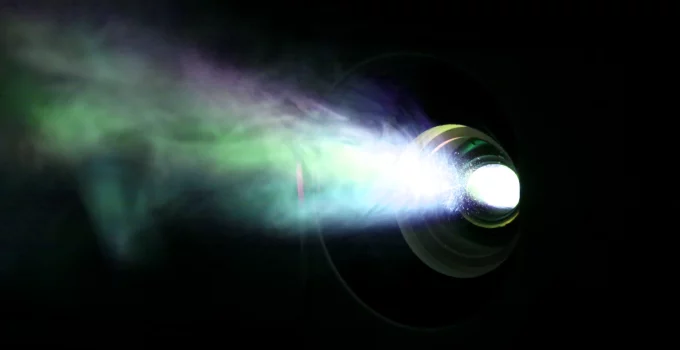Asking the question do lumens matter for projectors is like asking if a CPU matters for a PC. Lumens absolutely matter for projectors. There’s no doubt about that.
Lumens are the spec that indicate the brightness of a projector. In general, the more lumens a projector has, the brighter it is. That’s also why, the more lumens it has, the more watts a projector usually uses.
It’s one of the most fundamental, basic specs for projectors because lumens volume is the measure that indicates the brightness of these devices.
However, do lumens matter for projectors is not the question we need to answer because we already answered it very simply.
Saying that lumens matter for projectors is not the whole thing. We must understand in which way they matter and in which proportion this spec should influence your buying decisions.
Table of Contents
Do Lumens Matter for Projectors? Data vs Home Theater Projectors
Lumens is immediately mentioned when looking at any projector. We basically get the name of the manufacturer, the name of the model, and how many lumens it packs.
Lumens volume becomes of greater interest when you want to project clear, sharp, bright images in well-light rooms.
For example, data projectors (those that are used for business and educational purposes to display graphs, PDF, PowerPoint presentations) need a higher brightness than home theater projectors, which are usually used in a room with the lights out.
On the other hand, home theater devices focus not only on lumens but also on having a high contrast ratio but that’s a discussion for another article.
Data projectors will usually have SVGA, XGA, WXGA, and WUXGA resolutions.
Home theater projectors have HD, Full HD, and 4K resolutions. These also have a 16:9 aspect ratio.
How Many Lumens Do You Need?

One way of choosing the best projector for you is based on how many lumens it has and the types of light settings you’re going to use it in.
Before giving examples of how many lumens you’ll want, I just want to link to an interesting page that has some really great graphs.
This article from projectorpeople.com has graphs illustrating just how many lumens you need based on projector use (business, home theater, house of worship and education), screen type (4×3, 16×9, 16×10), and diagonal (from 70 inches up to 200 inches). In my 16×9 vs 16×10 projector screen article you can find out more about which is the right screen for you.
Based on those graphs, let’s see some examples of how many lumens you might need:
- between 3,000 and 4,500 lumens for business use on a 4×3 screen in slightly dimmed rooms but you’ll need over 5,000 for bright ambient light on 120-150 inches screens
- pretty much the same numbers apply for education use, too
- house of worship use on a 4×3 screen will require 3,000-3,500 lumens on 100-150 inches diagonal in some ambient light but the numbers need to exceed 4,000 lumens in bright ambient light
- for home theaters on a 16×9 screen, you can go with as little 1,300 lumens in a completely dark room/basement, go over 1,500 for some ambient light, and 4,000-4,500 lumens are needed in bright ambient light for screens up to 150 inches
Important Lumens Facts
There are a few things you must be aware of when it comes to lumens.
1. ANSI lumens
When measuring this spec, ANSI lumens are used, which is a unit defined by the American National Standard Institute for measuring the overall amount of light output by a projector.
Thus, manufacturers who use lux or LED lumens are not respecting the international standard and there’s no way to compare their models’ brightness with brightness measured in ANSI lumens.
2. High lumens volume = high brightness
As a general rule, we acknowledge that the higher the number of lumens, the more a projector has the ability to display clear, sharp, colorful images and data in a well-lit room or in rooms with semi-dim lighting.
The higher the lumen value, the brighter the projected image will be.
3. Types of projectors
A projector might have fewer lumens than a competitor and still manage to have superior brightness.
That’s because there are 3 types of projectors: lamp-based, laser, and LED are the main 3 sources of light.
There are also different chip technologies for producing the image, DLP and LCD being the two most popular for all three types.
When it comes to lamp-based models, LCD trumps DLP because they generally have a sharper image and superior color reproduction.
4. LED projectors are different
LED models will always have a lower number of lumens than the classic lamp-based and laser models, often maxing out at 2,000 ANSI lumens. However, they’re still regarded as being capable of delivering high quality images.
Therefore, some of these principles might not apply to them, although we also have fewer LED projectors to choose from.
According to viewsonic.com (a famous projector manufacturer), LED models have managed to improve color saturation and luminous efficiency.
That’s why I said that some of these rules are not going to apply to them.
They still manage to deliver high brightness even if you couldn’t tell that by just looking at the number of lumens. Some manufacturers will display their specs in LED lumens and not ANSI lumens.
5. High lumens don’t equal excellent image quality
Do lumens matter for projectors? Absolutely, no doubt about that.
Are they the only thing that matters? Of course not.
There are so many other specs to consider: light source, native resolution, contrast ratio, color gamut/color reproduction, color wheel RGB purity, throw ratio range, etc. are some of the most important features to consider.
Portability, range of connectivity options can also matter for some people. Even fan noise can matter when you make the final choice.
How lumens decrease over time
You might already know that with lamp-based projectors, you’ll have to change the lamp at some point in time.
Each model has an estimate for lamp life. For example, the Epson 2250 3LCD Full HD has a lamp life estimate of up to 4,500 hours in normal mode and up to 7,500 hours in eco mode.
With lamp-based models, brightness decreases quite noticeably so you’ll know for sure that it’s time for a replacement.
On the other hand, laser projectors are estimated to last around 20,000 hours at high brightness. The same goes for LEDs. After 20k hours, the brightness starts diminishing. Depending on how often you use it, that can end up being 10 to 20 years of high to medium use.
What is impressive about laser projectors is that consistent brightness is maintained throughout these many years. Lamp-based decrease in brightness quite noticeably the more hours they amass.
Overall, we saw that the answer to the question do lumens matter for projectors is absolutely yes but we also saw that there are many other specs to consider besides how high the brightness is.




